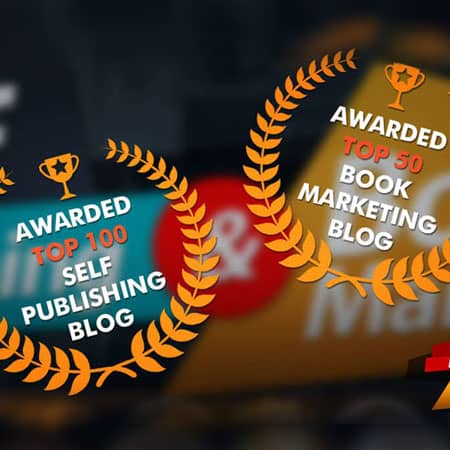
Sandra Wendel - November 2, 2023 - 
Book Production Tips – What You Need to Know Before You Publish Your Book
Book production may seem like a simple task at first. You wrote your first book, and you are excited to make it happen. You read about publishing and book production. You understand you need to work with editors and designers, and you know you will have to learn to navigate Amazon’s KDP platform.
So far, so good. What could possibly go wrong?
Well, book production can also go horribly wrong. If you foolishly decide to be your own editor or hire the English teacher next door or your mother-in-law who said she’d find all the typos, and you think your manuscript is ready for a cover design and then interior, you may be quite wrong. Fatally wrong.
If you don’t have a professional edit, you may be putting a poorly written and badly edited manuscript into production way too soon.
And your designer is not going to bail you out.
Or maybe the designer will.
I am a nonfiction book editor. The designers I work with often know if a manuscript is poorly written, not consistent, and just not ready.
Here are some of the big red flags we editors fix and designers should send back to you for fixing:
Obvious typos.
If you don’t fix them, who will? And don’t wait to get your book already in PDF pages to edit. It’s a lot more expensive to edit the further along you are in production. It’s not the designer’s job to find and fix typos. It’s yours. And your editor’s and the proofreader’s, and ultimately you’ll find more typos when your book goes live on Amazon. You can easily fix those flubs and reupload a file. Nothing is ever perfect.
Super long paragraphs.
Take a look at a well-produced book. Open the book and see if the pages are inviting. Is there white space created by having enough paragraph indents? Or do the pages look like gray walls? Remember from grammar class, each new speaker in dialogue starts a new paragraph. Break up long passages. Use bulleted lists, graphics, illustrations, and photos where appropriate.
Oh, and every graphic and photo requires a caption. Give your designer a separate file of all those graphics and photos and illustrations and assign each a unique number to match a callout in your book’s Word document. Then, in that main document, indicate where each graphic element goes with a bracketed note like this: [photo 34 here: caption: Our family took a vacation to the Grand Canyon in 1995. From left, my dad, mom, me, and my brother Frank.] You are being courteous to your reader by identifying the photo and its contents and anchoring it in time.
Subheads.
Subheads (in nonfiction) are another way to break up long passages of text. Use them. In fiction, try more paragraph breaks or make more chapters.
Take advantage of descriptive chapter titles instead of labels for nonfiction. An example would be a chapter titled Hello, I’m from the Government and I’m Here to Help You instead of a chapter titled IRS Information. See the difference? And what if you’re writing fiction? Can you make distinctive chapter breaks? With a talented designer, you can create something fun with the numbers. A graphic element.
What about epigraphs?
Those are the annoying quotes from other people that some authors feel compelled to insert at the beginning of each chapter in nonfiction. This technique is overdone, but if you insist on having epigraphs, quote yourself. Interestingly, I am seeing epigraphs in some fiction if there is a timeline story unfolding or a tag about which day it is. Who said you can’t have chapter titles in fiction anyway?
Missing parts of the book.
Don’t go into production without all the parts of a book in place. Your designer can’t guess how many pages to plan for if you say the introduction is coming. I often prompt authors to add the missing elements such as endorsements (on the first few pages of the manuscript); a copyright page that contains all the pertinent info such as a copyright notice with the year, name of the publisher (even if that’s you or your company), how to reach you with a website and email, a disclaimer, and your ISBNs; a contents page (sometimes I have to create this in the editing process); an About the Author bio at the end of the book (readers need to know who you are, tell them); and an optional Acknowledgments section just before the author bio where you thank everyone who helped you create your masterpiece including the dog.
Length.
Length matters. Is your book the right length for the genre? Or too short? This is a big deal, so don’t overwrite or underwrite. Be like Goldilocks.
Mechanical stuff.
A properly edited manuscript that is ready for book production will not have two spaces between sentences, no matter what your typing teacher told you. You won’t have played graphic designer yourself and used every font available to pretty up your work. One font will do because your job at this writing point is to Get. The. Words. Right. That’s it. No colors, no underlining, no fancy fonts. That’s the job for your designer.
I have had designers suggest strongly to their clients to get an edit before anybody spends time and talent in producing a book.
If your designer suggests you get an edit, thank them. Make that designer your best friend. Shower them with gifts. They have spared you the pain of receiving pathetic one-star Amazon reviews.
I can’t tell you how often I have received referrals from designers (and it’s usually the other way around; I send my authors to talented designers when they are ready for that next step into book production). The partnership with your editor and designer can be critical.
If I know which designer an author is working with, I can code the manuscript and prepare it for their process with headings and internal coding for sidebars and illustrations. We work as a team to get you an amazing product. By coding, I mean using Word headings 1, 2, and maybe 3 to show the designer what level the headings are to be. Then the designer doesn’t have to guess.
Ask your designer this question: What can I do to get my manuscript ready for you to create the interior? And then do what they instruct. Or have your editor work with the designer to get the details right.
The result? A cleaner manuscript going into production. The cleaner your PDF pages for proofreading, The more magnificent your final fully designed and produced book. Now isn’t that the goal?
Designers know you poured your heart into creating a manuscript, but they are not editors. Yet the savvy designers know when a manuscript isn’t ready to move into interior design. Hold on before you spend/waste too much money on a book that isn’t ready.
Don’t miss editing—this all-important step in book production between writing and publishing. The editing is as important as any other step. Why would you want to create a lousy product with your name on the front cover?
I wrote a book to guide you. Find Cover to Cover: What First-Time Authors Need to Know about Editing on Amazon. And use the checklist at the back to prepare your manuscript for production.
If you liked this article you might also like:
• Instagram for Authors. Simple Secrets to Rock Your Instagram Presence.
• Amazon Author Central – How to Setup Your Author Page on Amazon!
• The Book Marketplace Has Changed. Make Your Book Available From All the Online Retailers!
• The Levels of Writing and Editing Explained Once and for All
• Why First-Time Authors Need an Editor!
• Book Marketers Secrets – 7 Secrets of Top Book Marketers!
• Self-Publishing Success Stories. Secrets of Million Dollar Self-Publishers!
• Never Judge a Book By Its Cover! – Are You Really Sure?
• Business Plan for Authors. Do Authors Need a Business Plan?
• Creative Book Marketing Ideas for Selling Your Books!


